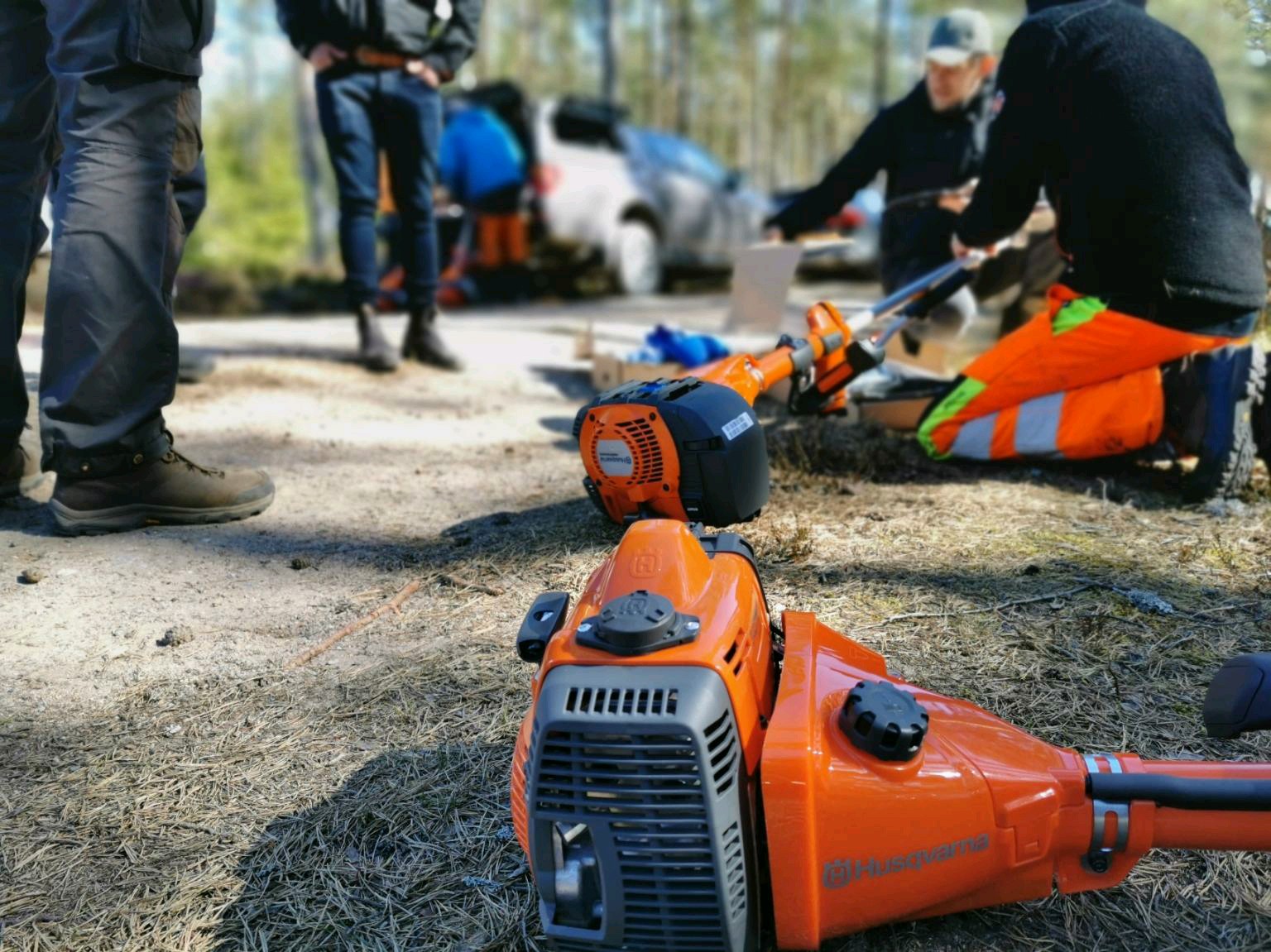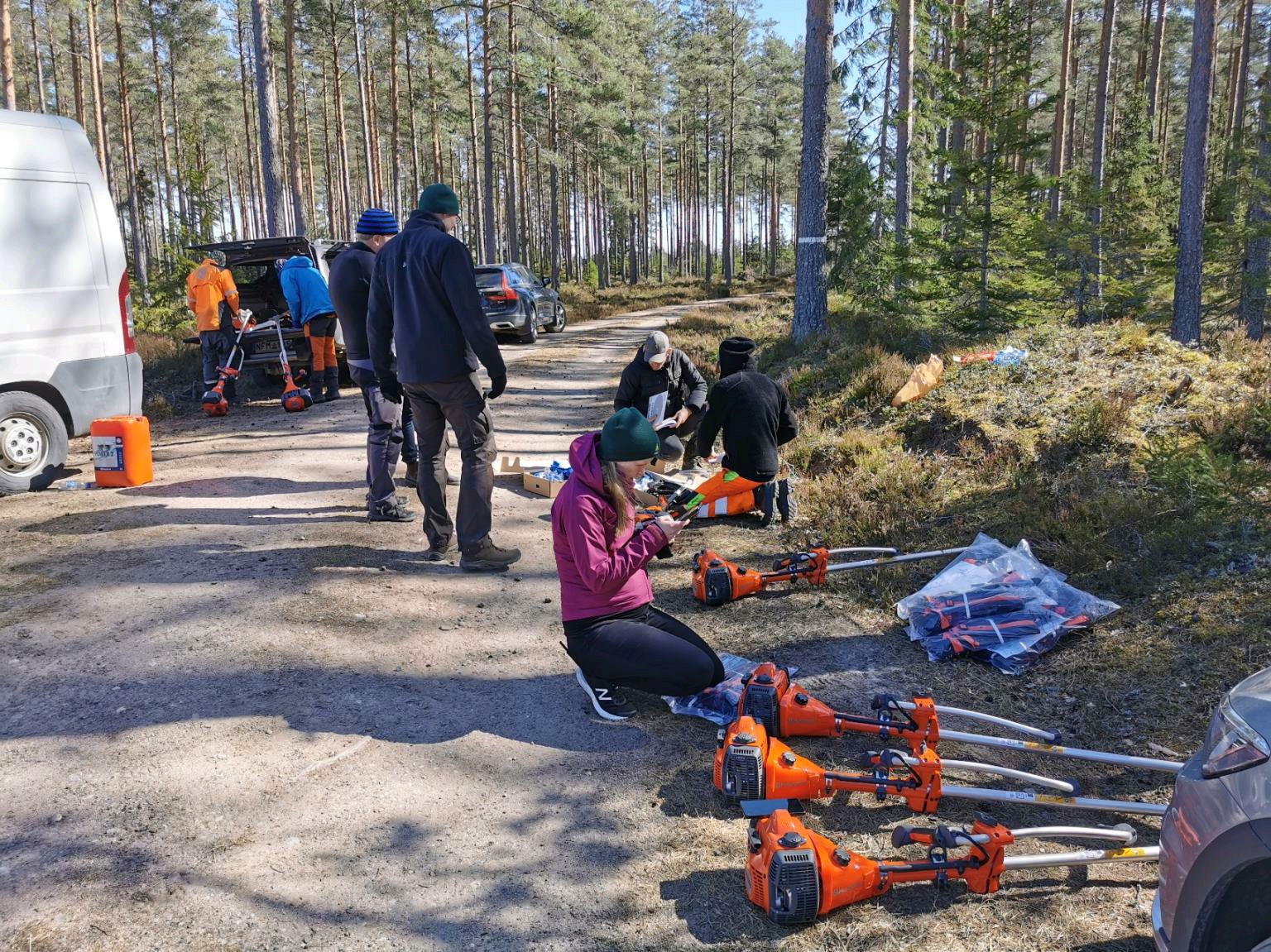Brush saw certification – Essential Training for Safe and Efficient Operation
If you’re looking to operate a brush saw, obtaining proper certification is a critical step. Whether you’re in forestry, land clearing, or landscaping, having the right training ensures you can use the brush saw safely and effectively.
This blog will walk you through everything you need to know about getting your brush saw certification, including the requirements, costs, and training involved.
What does Brush Saw Certification?
Brush saw certification formally recognizes that you have the necessary skills to operate a brush saw safely. Brush saws, also known as clearing saws or brush cutters, are powerful tools designed for cutting through thick vegetation, shrubs, and small trees. Because of the potential risks involved with using these tools, proper training is essential to avoid accidents and ensure both your safety and the safety of those around you.
Certification ensures that you meet the necessary safety standards required. It demonstrates that you can operate a brush saw with proficiency and follow industry best practices. Furthermore, employers will value your certification, as it guarantees you’re trained to minimize risks associated with the job.
Why does Brush Saw Certification Important?
Brush saws are potent tools, and improper use can result in severe injuries. Certification ensures that workers are trained to handle these machines with caution, making safety a top priority.
Additionally, many employers in industries like forestry, landscaping, and vegetation management require certification to ensure that their workers are equipped with the necessary skills to operate these tools safely and effectively. Having certification can significantly increase your employability and career advancement opportunities.
Requirements for Brush saw certification
To obtain brush saw certification, you need to meet certain prerequisites:
1. Age and Experience: Typically, you must be at least 18 years old to enroll in a brush saw certification course. While there are no strict experience requirements, familiarity with power tools or machinery is beneficial. If you’re new to using brush saws, the course will cover all the foundational skills you need.
2. Safety Knowledge: Understanding workplace safety and personal protective equipment (PPE) is essential before using a brush saw. During your training, you’ll be taught how to wear and use safety gear, such as gloves, eye protection, and ear protection, as well as how to handle hazardous situations.
3. Training Course: Completion of a certified training program is necessary to earn your brush saw certification. Several accredited training providers in offer these programs, which generally include both classroom and practical, hands-on training.

Brush Saw Certification Course Overview
A typical brush saw certification course will include:
- Brush Saw Operation: You’ll learn about various models of brush saws and their best uses, along with techniques for cutting different types of vegetation.
- Safety Practices: The course will cover safe handling procedures, proper stances, and how to avoid accidents while operating the saw.
- Equipment Maintenance: You’ll be trained on how to maintain the brush saw, including how to sharpen blades and perform basic equipment upkeep.
- Environmental Considerations: Learn about environmental factors and how to reduce the impact of your work on the surrounding ecosystem.
At the end of the course, you’ll undergo both a written exam and a practical test to assess your knowledge and skills. Upon passing, you’ll receive your certification.
Cost of Brush saw certification
Although the upfront cost may seem high, it’s an investment in your career. Certification opens up various job opportunities in industries such as forestry, landscaping, and land clearing. In many cases, employers are willing to pay a premium for certified professionals, making it a worthwhile long-term investment.
Additional Costs to Consider:
- Personal Protective Equipment (PPE): Some courses provide PPE, but you may need to purchase certain gear, such as gloves, safety boots, or helmets.
- Travel Costs: If the course location is far from your home, you may need to factor in travel and accommodation costs.
What to Expect During Brush Saw Training
Brush saw certification training generally follows a two-part structure: classroom instruction and hands-on practice.
1. Classroom Training:
In the classroom, you’ll learn about:
- The theory behind brush saw operation
- Different types of brush saws and their uses
- Key safety regulations and environmental considerations
2. Hands-On Training:
The practical portion allows you to operate a brush saw under the supervision of an instructor. You’ll practice using the tool on various vegetation types, applying safety techniques, and performing maintenance tasks. This is the part of the course where you can refine your skills before taking the final exam.
3. Testing and Certification:
At the conclusion of your training, you’ll be tested on both theoretical knowledge and practical skills. Upon passing, you’ll receive your brush saw certification, allowing you to use the tool professionally.
Brush Saw Cutting Techniques You Will Learn
A major component of your certification training involves learning brush saw cutting techniques. You’ll be taught how to adjust your approach depending on the type of vegetation you’re working with, whether it’s thick brush, tall grass, or small trees. Safe cutting practices are emphasized to reduce the risk of injury, such as using the proper stance and cutting angle to prevent the saw from kicking back.
Next Steps: Get Certified and Start Your Career
Brush saw certification is an important step in ensuring that you can operate these powerful tools safely and competently. Whether you’re pursuing a career in forestry, landscaping, or land clearing, certification will improve your employability and provide you with the necessary skills to succeed.
While there are some costs associated with the course, the benefits of certification far outweigh them. Not only will it make you a safer and more effective worker, but it also opens doors to better job prospects in a range of industries.
If you’re ready to begin your certification journey, contact a training provider near you to get started. Investing in your training will pay off in the form of enhanced skills and new career opportunities.
FAQs
How long does it take to complete brush saw certification training?
The duration of the training varies depending on the provider and the course structure. Generally, brush saw certification courses take between one to three days to complete. This includes both classroom instruction and hands-on practice. Some providers may offer a more flexible schedule, so it’s best to check with the course provider.
Do I need previous experience to get certified?
No, previous experience with a brush saw is not required to get certified. The course is designed to teach you everything you need to know, including brush saw cutting techniques, safety measures, and equipment maintenance. Even if you’re new to the tool, you’ll be able to learn and get certified.
Is the certification valid across Canada?
The brush saw certification is typically recognized within the province. However, it may also be accepted in other provinces if they follow similar safety and training standards. It’s a good idea to check with employers in other areas to see if they recognize the certification for use in their specific region.
Can I renew my brush saw certification?
Brush saw certifications generally don’t need to be renewed, as they are valid indefinitely. However, it’s always a good idea to stay up to date with any changes in safety regulations and equipment technology. Some employers may require you to take a refresher course periodically.
What should I bring to my brush saw certification course?
You will need to bring appropriate personal protective equipment (PPE), such as safety boots, gloves, eye protection, and a helmet. Some training providers may supply these items, but it’s always best to check with them beforehand to ensure you’re fully prepared for the course.

